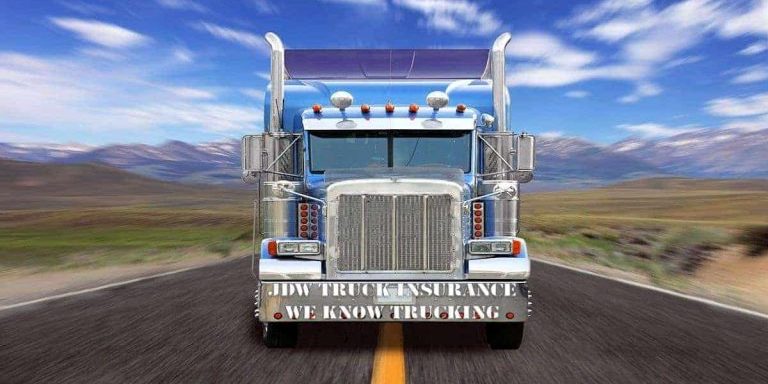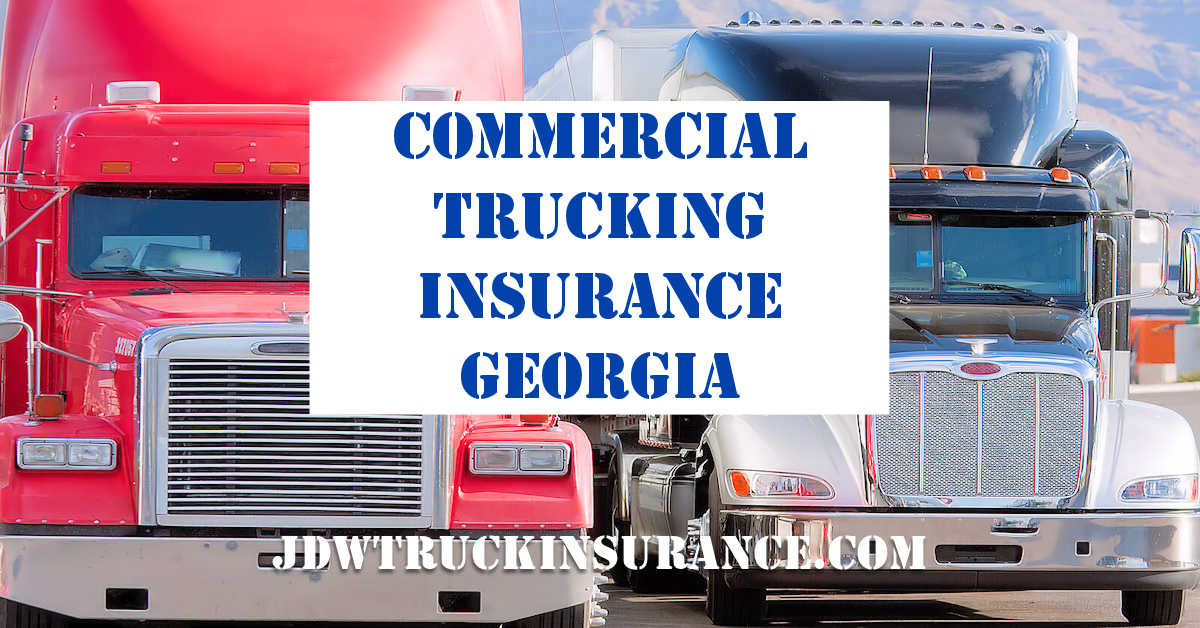Owner Operator Truck Truck Insurance Cornelia, Georgia
New Authority Truck Insurance Georgia
Commercial truck insurance Georgia. Owner Operator Truck Truck Insurance Cornelia, Georgia. Affordable commercial truck insurance GA. Top rated commercial truck insurance companies Georgia.
Owner Operator Truck Truck Insurance Cornelia, Georgia
If you are searching for New Authority Truck Insurance Georgia. JDW Truckers Insurance specializes in New Authority Truck Insurance in Georgia. We help you get affordable commercial insurance rates for your new authority.
We offer quote from only the top rated commercial truck insurance companies who offer the best rates for your new authority in Georgia.
JDW will help get the the correct commercial truck insurance in place which will fit your budget and allow you to haul the cargo you want and need to in order to be successful.
We are here to answer your questions with fast and friendly service.
Owner Operator Truck Truck Insurance Cornelia, Georgia
We offer affordable new authority trucking insurance for the entire state of Georgia.
We Customize your New Authority Truck Insurance to Help you Save Money!
Our agents at JDW Truckers Insurance know trucking insurance in Georgia. We will explain the different options and commercial truck insurance requirements in Georgia.
We help you get the right coverages in place so you are no over paying for coverages you may not need. We also help you make sure you have the coverages you need in place. And we do this at affordable commercial truck insurance rates.
New Authority Truck Insurance Requirements and Options
General Liability Insurance for Truckers
- General liability insurance for truckers should not be confused with primary liability for truckers.
- Similar to primary liability. General liability offers coverages to pay for physical damage to other and/or bodily injury to others. BUT there is a difference between the two.
- For example, if you are loading or unloading and you cause injury to someone or their property this is when the general liability policy would respond.
- The actions of a driver while representing the insured and on the premises of others, such as loading docks and truck stops
- General Liability is normally offered $1,000,00 per occurrence and $2,000,00 aggregate. What does this mean?
- It the insurance company will pay up to $1,000,000 for any one claim and no more than $2,000,000 per year for the total of all claims.
- General liability can be required by shippers and other companies such as the UIIA and flatbed operations.
- If there is any chance you might be involved in loading or unloading. General Liability is relatively inexpensive and is an advised coverage.
Auto Liability Insurance
- Your Auto Liability or primary liability will be the major cost for your trucking insurance policy. Although the FMCAS can only require $750,000 in most cases shippers will require $1,000,000 in primary liability insurance coverage before they will allow you to pick up loads.
- Primary liability insurance covers damages to third parties for bodily injury and physical damage to others property in the event of an accident.
Medical Pay
- In most cases this is a low cost add on to your primary liability insurance to cover medical expenses.
PIP – Personal Injury Protection
- Some states require this coverage and, in many cases, can reduce the need for Medical Pay.
- Personal injury protection (PIP), also known as no-fault insurance, covers medical expenses and lost wages of you and your passengers if you’re injured in an accident. PIP coverage protects you regardless of who is at fault.
Uninsured Motorist
- If you’re hit by a driver with no insurance…
- Uninsured motorist bodily injury (UMBI) may pay medical bills for both you and your passengers.
- Uninsured motorist property damage (UMPD) may pay for damage to your vehicle.
Underinsured Motorist
- If you’re hit by a driver with not enough insurance…
- Underinsured motorist bodily injury (UIMBI) may pay medical bills for both you and your passengers
- Underinsured motorist property damage (UIMPD) may pay for damage to your vehicle
Motor Truck Cargo
- MTC or Cargo insurance provides insurance on the freight or commodity hauled by a for-hire trucker. It covers your liability for cargo that is lost or damaged due to causes like fire, collision or striking of a load.
- If your load is accidentally dumped on a roadway or waterway, some cargo forms offer Removal Expenses coverage pays for removing debris or extracting pollutants caused by the debris. And can also pay for costs related to preventing further loss to damaged cargo through Sue and Labor Coverage and legal expenses in the defense or settlement of claims. Another option is Earned Freight Coverage to cover freight charges the customer loses because of an undelivered load.
- Cargo insurance deductibles can be set at $1,000, $2,500, $5,00 or even higher if you are self-insured.
- Cargo coverage limits are normally set at $100,00 but some shippers may have higher requirements depending on the cargo you are hauling.
- Cargo policies can have exclusions stating what cargo it will or will not cover.
Trucking Physical Damage Insurance (PD)
- Physical damage insurance coverages are designed to pay for losses to your equipment and damages to others equipment. (Others equipment must be listed on your policy).
- If you own or lease equipment. You may be required to have PD by bank or leasing company to carry a set amount of physical damage insurance and name them as a Loss Payee.
- PD can also cover damage to others equipment you are in possession of if the coverage is listed on your policy. An example would be non-owned trailer insurance coverage.
- Deductibles for physical damage range from $1,000 to $5,000.
- Required deductibles. If you have a loan on your equipment or it is leased. They bank or leasing company may have a minimum deductible you can have on your physical damage policy.
Owner Operator Truck Truck Insurance Cornelia, Georgia
Chat with JDW Truckers Insurance. We are fast and friendly. Great customer service. Free 24/7 COI.
We offer affordable new authority truck insurance in:
AL – AR – FL – GA – IN – MO – MS – NC – OH – PA – SC – TN – TX – VA
We offer new authority truck insurance quotes for:
- Dry van
- Flatbed
- UIIA
- Amazon
- Reefer and more
Owner Operator Truck Truck Insurance Cornelia, Georgia
Owner Operator Truck Truck Insurance Cornelia, Georgia
Cornelia is a city in Habersham County, Georgia, United States. The population was 4,160 at the 2010 census, up from 3,674 at the 2000 census. It is home to one of the world’s largest apple sculptures, which is displayed on top of an obelisk-shaped monument. Cornelia was the retirement home of baseball legend Ty Cobb who was born nearby, and was a base of operation for production of the 1956 Disney film The Great Locomotive Chase that was filmed along the Tallulah Falls Railway that ran from Cornelia northward along the rim of Tallulah Gorge to Franklin, North Carolina.
Cornelia is located in southern Habersham County and is bordered to the east by Mount Airy and to the southwest by Baldwin.
According to the United States Census Bureau, the city has a total area of 4.0 square miles (10.3 km), of which 0.04 square miles (0.1 km2), or 1.06%, are water.
Cornelia was originally called “Blaine”, and under the latter name had its start in the early 1870s when the Charlotte Airline Railroad was extended to that point. The Georgia General Assembly incorporated the place in 1887 as the “Town of Cornelia”.
Cornelia abounds in historical lore. Near the city is the Wofford Trail, on which many stagecoach robberies occurred. The last railroad holdup in Georgia took place at Cagle’s Crossing, which is a few miles south of Cornelia. The whole of Habersham County was extremely loyal to the Confederacy and was known, along with the Shenandoah Valley of Virginia and countless other fertile, out-of-the-way places as the “breadbasket of the Confederacy”, as thousands of bushels of wheat and corn were supplied to the troops from this area alone. After the Fall of Atlanta, a detachment of William Tecumseh Sherman’s cavalry was sent to raid the county; but the Confederate Home Guard, made up of men too old for military duty, left the mountains on which Cornelia is situated and met the Union soldiers at a narrow pass about four miles east of the town. By making considerable noise and stirring up clouds of smoke, they scared off the Union soldiers and saved the area from complete devastation. Today this skirmish is remembered as “The Battle of the Narrows”.
Cornelia has been helped in its growth by its good schools. In the early days, the school system was owned and operated by the town of Cornelia. Each student provided their books and paid a tuition fee, half payable before Christmas, with the balance due after Christmas. The school principal would determine what books would be needed and would then send someone to Atlanta to order books and supplies personally from the publishers (Maxwell, p. 4).[citation needed] Among the first schools was the Kimsey Institute, located on land given by T.J. Kimsey. The First Baptist Church was organized there; for many years it was used for both school and church. Willie Grant and J.T. Wise were two of the early teachers. After attendance outgrew the early frame building in 1897, another school was built with Professor A.E. Booth elected as principal. According to the document published by the Habersham County Department of Education in 1937, Professor Booth added a training course for teachers, and students were attracted to this school from all sections of northeast Georgia (p. 21). Cornelia Normal Institute was chartered on May 27, 1901. In 1952, the schools in Habersham were consolidated. The elementary schools had been kept in each town but two high schools were built, one to serve each end of the county. Prior to 1952, Cornelia Public School served all the students residing in Cornelia. The high school curriculum included college preparatory and business classes, athletics for both males and females, music, and “expression” (speech classes). The school’s first graduates were in the Class of 1899 and included Martin L. York, Charles Crunkleton, Calvania T. York, Albert N. McConnell, Wylie G. Light, and Ida K. Baugh.
German and Swiss immigrants used their wine-making skills to create an industry in the 1880s that flourished until a prohibition law stopped it. Cotton, timber and lumber products, and the apple and peach industries were also important to the success of the area. Riegel Textile built one of the region’s first major industrial facilities in 1966 with what was then an ultra-modern, cutting edge textile mill designed by Bill Pittendreigh in the neighboring community of Alto. As with any city, there were a number of businesses, but hotels contributed greatly to the growth and development of the city in its early history.
Cornelia’s Big Red Apple, located at the old train depot in downtown, pays homage to the apple and apple growers of the county. Built of steel and concrete in 1925, the statue, according to Habersham County, weighs 5,200 pounds (2.4 t) and is 7 feet (2.1 m) high.
Towards the end of World War I, “extension agents” began to play a very important role in northeast Georgia. These people, as a group, supported the end of the one-crop (cotton) economy. Throughout the state they began to educate farmers in crop diversification so that if one crop failed income from other crops could support the family. In Gwinnett, Cherokee and Hall counties, farmers increased production of dairy products. The peach crop in Bartow County was expanded. In Habersham and Gilmer counties farmers increased production of apples and peaches.
The extension agents’ push for this diversity seemed almost prescient, for in 1922 the boll weevil began the systematic destruction of cotton crops in the state of Georgia. By 1924 cotton output had dropped to 50% of earlier levels. In 1925 the people of Cornelia realized that the apple had been a key in preventing the scourge that destroyed other counties and drove rural families to cities like Atlanta and Macon. The concept for the statue was born, thanks in part to the newly formed Kiwanis Club.
At the dedication on June 4, 1926, many notables attended, including Senator Walter F. George. Because apple sales were off dramatically, in 1932 local farmers decided to put them in cold storage until the following spring, but the sales did not materialize, so the farmers were not only out the cost of raising the crop, they were also out the cost of storing the crop. By the summer of 1933, the apples that had saved the county less than 10 years earlier nearly destroyed it.
Through the years downtown Cornelia changed dramatically. As the railroad era passed the old depot was closed and boarded up, and the once central location was only a side street. A recent renovation has brought the depot back to life, and the quiet Big Red Apple is the focal point of a yearly festival held the first week in October and a 5K road race held at the end of October.
As of the 2020 United States Census, there were 4,503 people, 1,365 households, and 871 families residing in the city.
As of the census of 2010, there were 4,160 people, 1,495 households, and 1,495 families residing in the city. The population density was 1,071.3 inhabitants per square mile (413.6/km2). There were 1,728 housing units at an average density of 469.7 per square mile (181.4/km). The racial makeup of the city was 67.7% White, 5.7% African American, 0.9% Native American, 4.2% Asian (3.0% Laotian), 0.6% Pacific Islander, 16.5% from other races, and 4.4% from two or more races. Hispanic or Latino of any race were 34.8% of the population (26.7% Mexican).
There were 1,016 households, out of which 24.4% had children under the age of 18 living with them, 47.4% were married couples living together, 12.6% had a female householder with no husband present, and 35.6% were non-families. 32.1% of all households were made up of individuals, and 17.5% had someone living alone who was 65 years of age or older. The average household size was 2.47 and the average family size was 3.09.
In the city, the population was spread out, with 23.4% under the age of 18, 11.0% from 18 to 24, 26.4% from 25 to 44, 21.7% from 45 to 64, and 17.5% who were 65 years of age or older. The median age was 37 years. For every 100 females, there were 93.8 males. For every 100 females age 18 and over, there were 89.2 males.
The median income for a household in the city was $31,111, and the median income for a family was $42,041. Males had a median income of $25,505 versus $20,404 for females. The per capita income for the city was $21,701. About 8.8% of families and 13.3% of the population were below the poverty line, including 15.1% of those under age 18 and 20.2% of those age 65 or over.
Choose the Right Agent
When choosing the agent, you want to represent you to the insurance companies. Pick an agent that is trained in commercial truck insurance. And make sure the agent you choose to work with is there when you need them. Our agents are trained in commercial truck insurance and are easy to contact. Email, phone call or text message. We respond quickly to our clients.
Certificate of Insurance
Not being able to get a quick COI could cost you money by not being able to pick up a load for the lack of a COI. Our clients at JDW Truckers Insurance are given access to our COI Portal where they can issue a COI 24/7 free of charge.
Insurance Companies Customer Service
Not only should you choose a responsive agent but you will want to be insured by a commercial insurance company who also responds to your requests and are there to help you in case of a claim or endorsements
AM Best Ratings
The AM Best Rating of the commercial truck insurance company you choose to insure your operation should not be over looked. You want to be insured by a trucking insurance company that has the financial stability to pay claims. Many shippers will require an AM Best Rating of A – minus of better. At JDW all of network of commercial truck insurance companies have an AM Best Rating of A – or better.



